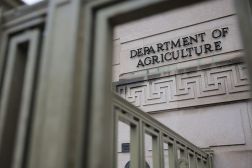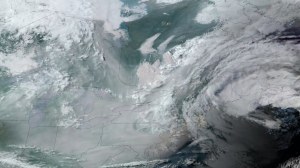The next big thing in agriculture? Drones on farms

Farmers may start using a cattle drone instead of a cattle call to keep tabs on their livestock.
Drones will be the future of advanced agriculture data, said Michael Valivullah, chief technology officer at the National Agricultural Statistics Service, which is housed at the Department of Agriculture.
Valivullah spoke Wednesday on a panel about what’s next for big data at the MarkLogic Data Innovation Summit, which was produced by FedScoop.
He drew raised eyebrows from the crowd as he talked about “precision agriculture” — and how farmers are going to be able to use drones to get data about their crops.
“Farmers are going to be more dependent on drones,” Valivullah said. “The reason being, drones are a lot cheaper and can gather high-resolution, sensitive data. So a farmer or rancher will be able to understand what they have in their operation.”
There are 2.3 billion acres of land across the United States, and about 900 million of those acres comprise farmland, Valivullah said. USDA keeps track of farmers who produce and sell products that are worth more than $1,000 in a central database.
The agency once used traditional paper and pens to collect information, but it started sending out electronic forms — as well as iPads and tablets — a few years ago to researchers in the field.
Drones may be an even better way of collecting data. Farmers will be able to zero in on specific information about the health of their crops on their own land that drones will pick up, Valivullah said.
“Accuracy of data is very important. The confidentiality and quality of data are also very important,” he said. “If we put good data in, we get good data out.”
The higher resolution that comes with using drones means that pixel count will be in the trillions, rather than billions, which is currently what satellite data produces.
But, Valivullah added, the agency has to be prepared for the influx of the new data that will be available.
“We have to be able to handle that amount of data,” he said. “How do we prepare ourselves?”
Reach the reporter at corinne.lestch@fedscoop.com and follow her on Twitter @clestch.






